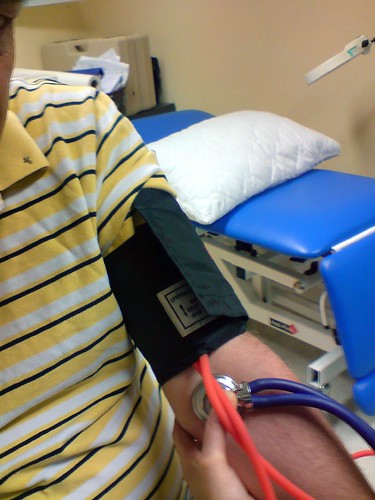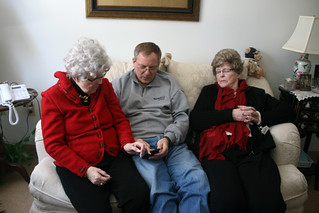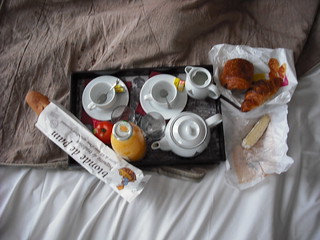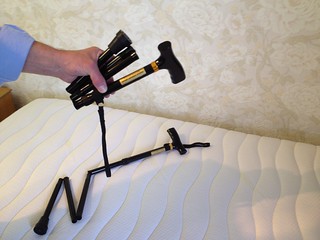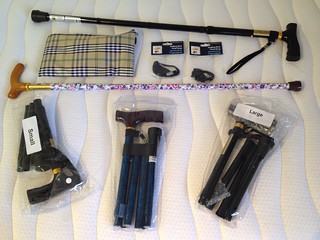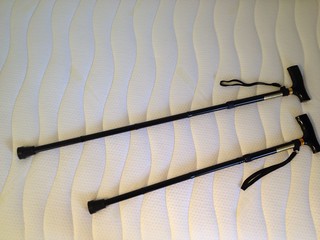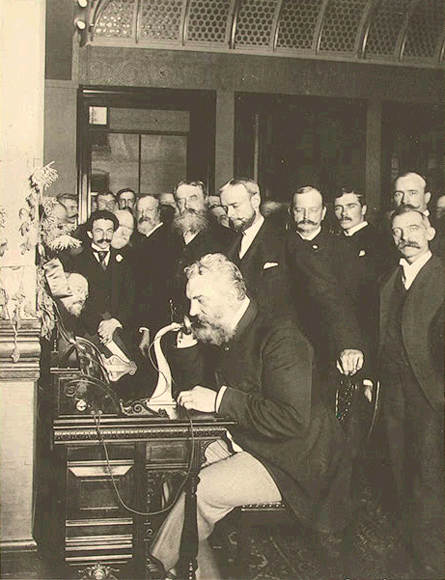Walking Sticks Stoke on Trent & Newcastle under Lyme
and all of Staffordshire, Cheshire, Derbyshire & Shropshire
The famous - CASTLE FOLDING ADJUSTABLE WALKING STICK is always available at ...
A special offer price
of JUST £10
Call us to reserve yours today.
WALKING STICKS .. Castle Comfort of Newcastle under Lyme in Staffordshire became kind of 'famous' for the supply of walking canes when they opened their stall in a Stoke on Trent market stall. A decade ago, quite a stir was caused when visitors to Hanley, Stoke on Trent indoor market found themselves having their 'ferrules' changed on their walking canes - FREE OF CHARGE. The ferrule is the metal or rubber stopper on the end and folks came from miles around to see if it was true.
It started, not as a gimmick as such, but the firm who obtained the ferrules from manufacturers for around 50p each - found it time consuming and uneconomical to account for and charge 75p-£1 and write out a receipt for each one. So they gave them away. Soon it was realised that peoples appreciation of getting something for nothing (and an item that can be difficult to find) resulted in one of Castle Comfort's best ever marketing policies. The local community got to know and love this local company that was clearly not out to make every penny it could - and naturally when time came to invest in a chair, bed or a stair lift - then CCC's Wolstanton showroom became the place to visit.
To this day - a posse of Castle Comfort team members make regular visits to lots of care homes, residential complexes and a 'coffee morning ferrule change.' They can be found at place such as Bradeley Village, Lisbon Place in The Westlands, Newcastle under Lyme, Gordon Court, Newhouse Court, Mill Rise, Amberly House, Lea Court, Berry Hill, Garners Garden Centre and many more. You no doubt will have seen us when out shopping at your local Morrison's and Sainsbury's stores (the latter especially on Red Nose Day).
If a similar product (and of a similar quality) is found elsewhere it will probably be around the £15 mark - thought it has been spotted retailing at up to £30 and even some suppliers may charge carriage. Also, if people cannot get to the showroom and live within a fifteen mile radius, it will be delivered FREE OF CHARGE. Naturally if ever the ferrule needs changing- that will be free.
Details -
A height adjustable CASTLE WALKING STICK folds when not in use for compact storage or transportation. Available in SMALL or STANDARD. One or the other will be fine for a very tiny dot of a person - up to an Olympic pole jumper. Simply try them out at the Newcastle under Lyme showroom or in the comfort of your own home when the Castle team member arrives, of course, by appointment.
They are made from strong powder-coated steel, have an arthritic friendly shaped handle and have non-marking slip resistant rubber ferrules (tips.)
SO, NOW YOU KNOW WHO TO CONTACT WHEN YOU WANT A WALKING STICK - AND REMEMBER IF YOU ARE HUNTING AROUND FOR A LOVED ONE - THEN THERE IS NO FINER PRESENT - (AND IT DOESN'T NEED TO BE FOR A BIRTHDAY, ANNIVERSARY OR CHRISTMAS)
CONTACT CASTLE COMFORT ON 01782 611411
NOW - WALKING STICK AND CANE
ENTHUSIASTS - AND WE KNOW THERE ARE MILLIONS OF YOU OUT THERE, READ ON... AND ENJOY ONE OF THE MOST FASCINATING ACCOUNTS EVERY WRITTEN ON THE SUBJECT OF WHAT MAYBE MAN'S (OR WOMAN'S) BEST FRIEND... EVEN MORE SO THAN THE DOG ................
If you thought that a walking
stick was just a walking stick, plain and simple, you would be wrong. The
humble walking stick, giving walking support to the aged and infirm, is
anything but. Walking sticks have been seen as a fashion accessory by some and
even a real, trusted friend by others with which to share life; akin to walking
the dog!
Walking sticks are also becoming an acceptable self-defence tool for ladies.
But if you ever bash a would be mugger over the head don´t tell the
police you carry it for that purpose. Just invent ´´a little arthritis
in the knee´´ - and wink at the copper. He´ll tick the right boxes.
“When you have no companion, look to your walking stick.”
(Albanian Proverb)
“The best, the most
exquisite automobile is a walking stick and one of the finest things in life is
going for a walk with it.”
(Robert Coates Holliday)
“Speak softly and carry a large stick; you will go far.”
(Theodore Roosevelt)
Edward VII (1841-1910)
was the son of Queen Victoria. He served as heir apparent and held the title
Prince of Wales. It is not hard to draw at least some comparisons between
Edward and Charles, Prince of Wales. Both princes had mothers as reining
monarchs endowed with longevity. Elizabeth 11 became Queen on the death of her
father, King George V1, in February 1952. She was only 25 years old. The
coronation was held in June 1953. Her remarkable 60 years on the throne, her Diamond
Jubilee, was one of the triumphs of 2012. Elizabeth 11 is the second longest
reigning monarch. Victoria was Queen from June 1837 to January 1901, a total of
63 years.
To be Heir Apparent, or monarch
in waiting, must be one of the most unenviable of roles. When most people are
looking forward to retirement, Charles, and Edward before him, cannot take on the
role which destiny has assigned them until their latter years, and then not
until the death of the parent!
Queen Victoria had a passion for
all things Scottish and this was epitomised by her choice of interior design at
Balmoral Castle. This is of course where the Royal Family spends their summer
holidays. The pursuit of all things Scottish is still a feature of senior
Royals and highland dress, with a stout walking stick, is a part of the holiday
at Balmoral Castle. Prince William apparently preferred jeans!
 |
| Source:Wikipedia Public Domain |
Edward VII at Balmoral. Note
the Scottish attire. The photograph is thought to have been taken by his wife,
Alexandra.
Look at the pictures of the two Heirs Apparent. What do you see
in common? The answer is a walking stick, a stylish accessory for the gentry of
the day.
Edward VII (Albert Edward) was
born on 9
th November 1841. He was King on the United Kingdom and all
of the British Dominions. He was also Emperor of India from January 22 1901. Edward
is thought to have been a champion of human equality and at times derisory of
the Government. He undertook a tour of India which lasted an incredible eight
months. It was noted that he treated all people equally, with no exclusions on
the ground of race, colour or religion.
In an outspoken and unpopular attack of the treatment of Indians by the
British officials he wrote
“Because a man
has a black face and a different religion from our own, there is no reason that
he should be treated as a brute.”
At the end of the successful tour, the title ‘Empress of India’ was bestowed on
Victoria by the British Parliament, thus creating Edward as the future Emperor
when he ascended the throne.
His family route was the House of
Saxe-Coburg and Gotha and he was the first British monarch from that dynasty.
The name, with its Germanic associations, was changed by his son, George V, to
the House of Windsor and the name remains in the present day monarchy. During
the long reign of his mother, Queen Victoria, he was largely excluded from
affairs of State and became the personification of the fashionable playboy with
a taste for the high life; fine wines, food and of course mistresses. Victoria
spoke harshly of him “I never can, or
shall, look at him without a shudder.”He
was nothing like her beloved Albert whom she worshipped all her life.
Edward was no ‘dedicated follower of fashion’; rather he
established the fashion for the gentry. He it was who made the wearing of
tweed, Norfolk jackets and Homburg hats the fashion in men’s wear Outdoors, he
was always accompanied by a walking stick, some styles for town and others for the
country.
Edward was responsible for some traditions which still are
followed today. These include the wearing of a black tie with dinner jackets
and leaving the bottom button of a waistcoat unfastened. I think that this was
born more from girth than fashion! Walking sticks too became the fashion and
there are some fine examples spanning the centuries.
I include at this point an aspect of country life of which I have a loathing. Shooting living creatures in the
guise of a ‘sport’, together with fox hunting with dogs. This walking stick
shows the head of a Retriever returning the quarry. The fox hunting ban in
Britain is still in force and will, I hope, remain so. I am visited by urban
foxes every night which solve my food recycling! In common with the majority of
the aristocracy and a rural way of life style of the less ‘well bred’, Edward
had a passion for hunting. The rooms of Balmoral, with tartan drapes and
carpets, adorned with stags heads, bare macabre testimony to the cruelty of a
particular form of ‘Scottish’ tradition, so passionately embraced by Victoria.
It is a regrettable anomaly that some senior Royals of today, Patrons of Wild
Life Conservation, continue to hunt.
Edward did not restrict his guns to Balmoral. His passion
led to a bizarre ‘naughtiness’ when resident at the Sandringham Estate in Norfolk.
It seems that he had the clocks altered to run an hour fast to create more time
for the morning shoots.
‘Sandringham
Time’, only ceased in 1936 on the express orders of Edward VIII.
People who shoot game birds need a stable platform from
which to fire, hence the design of another type of walking stick, the aptly
named shooting stick. The handle opens out into a two part canvas or leather
seat, mounted on a single leg with a ground spike. The user perches on the seat
and supports their body with their legs for greater stability.
Pheasant shooting sticks and walking sticks
Collectors of antiques do include walking sticks. Many are
exquisite pieces and demand very high prices. One such walking stick, dating
from 1780, is a fine example. The stick itself is built from Bark Malacca with a highly decorative handle
in fine German Meissen pottery. Malacca, referred to by makers as the “King of
Canes”, is a species of rattan palm, found along the coast of Sumatra. It is an
ideal medium for walking sticks; light weight but very strong. This opulent
stick is valued at a staggering £9000. The Malacca is of course a factor, but far
more so the fine Meissen.
Meissen began production of fine porcelain in Dresden. (Germany, not Stoke-on-Trent).
The ware can be authenticated by the crossed swords back
stamp, patented in 1720.
Alongside‘Meissen’, the name ‘Wedgwood’ is world famous. Josiah Wedgwood was born in 1768
in Burslem, Stoke-on-Trent. In childhood, Wedgwood contracted smallpox which
left him with a severely weakened knee. It was this weakness, rendering him
unable to use the pedal on a potter’s wheel, which caused him to change
direction towards design. He revolutionised the firing process with the
invention of the pyrometer, to give accurate temperature readings in the kilns,
for which he was recognised by the Royal Society. Being a son of
Newcastle-under-Lyme, adjacent to Stoke-on-Trent, I thought that I had a
reasonable knowledge of Josiah Wedgwood’s life. However, as in the adage,
’one is never too old to learn!’ I did
not know that in 1768 his knee problem resulted in the amputation of his right
leg. Wedgwood was a perfectionist. It is recorded that he would tour the
Etruria factory, closely inspecting the ware for the slightest imperfection. If
the quality was not to his standard, he would raise his walking stick and smash
the pot in pieces whilst shouting loudly
“This
will not do for Josiah Wedgwood.”
Modern day walking sticks may lack a little in elegance but
they are a functional aid to mobility. Many are available in a telescopic
design, and some effort is made to make them decorative for ladies! In common
with their Malacca ancestors, the walking sticks are light weight and yet give
strong support for those who need assistance when walking. The added advantage
is that they can be collapsed and stowed in a shopping bag.
Walking sticks feature in Folklore and Fantasy. Fairies and
‘little people’ are more the stuff of Ireland, but one old tale comes from
Wales.
A farmer from Cwmllan was tending his sheep in the hills. He heard a
cry for help. Only people cried and he could not remember seeing people on the
remote hill. He discovered a young girl. She had fallen and was trapped on a
ledge above a rocky cliff. With no thought for his own safety, the famer climbed
down and rescued her. A little old man appeared from nowhere, saying that the
girl was his daughter, and thanked the farmer profusely for saving her life.
The old man rewarded the farmer by insisting that he accepted his most valued
possession, his walking stick. Within a moment, both the old man and the girl
were gone from sight. It was as if they had never been.
From that day on, the farmer’s life changed and he became rich. His
sheep always gave birth to two ewes. No accidents or diseases struck his flock.
Sheep stealers were thwarted. Birds of prey never took a lamb. In the worst of
winter, sheep buried in snow drifts always survived. In due season, his flock
produced the finest wool. It seemed that the old man’s walking stick had
brought good fortune indeed.
One night, having brought the sheep off the hill, the famer walked to a
nearby village to a cock fight. He set off for home very late. A dreadful storm
blew up with high winds and rain in sheets. He had to cross a swollen stream,
using the stick to find a safe footing. Somehow the walking stick slipped from
his hand and was washed away by the torrent. Exhausted, the farmer finally
reached his cottage.
The next morning the storm had abated and the farmer set out to assess
any damage and to look for his stick. Nearly all of his sheep had gone, washed
away with the stick by the power of the torrent.
The farmer was ruined. His wealth had gone, as it came, with a walking
stick.
(Adapted
from ‘Welsh Fairy Book’ (1907) W. Jenkyn Thomas)
Fantasy
is perfectly adapted to the cinema. Looking at the momentous success of the
‘Harry Potter’ films who could question that?
‘Charlie
and the Chocolate Factory’
The original film, ‘Willy
Wonka and the Chocolate Factory’, was made in 1971 with Gene Wilder in the star
role as Willy Wonka, It was based on the book of the same title, written in
1964, by one of the greatest of children’s fantasy writers, Roald Dahl. It was
not a success. A second adaptation, ‘Charlie and the Chocolate Factory’ was
begun in 1991 and first screened in 2005. Willy Wonka played by Johnny Deep. A
young boy, Charlie Buckett, wins every child’s dream, a tour of a candy
factory. It turns out to be the most wonderful candy factory of all, run by the
wildly eccentric Willy Wonka. The sugar corridors are not as sweet as they
seem. The story unfolds with fantastical plots and intrigues but Willy and
Charlie triumph. The whole design is a colourful extravaganza with every
imaginable candy colour and shapes made in incredible ‘Heath Robinson’ machinery.
The musical (chocoholic) fans amongst us will not be
surprised to know that a new stage
version of the story will be premiered at the Theatre Royal,
Drury Lane, in May 2013. The show is directed by Academy Award winner Sam
Mendes. Music is by Marc Shaiman with choreography by Peter Darling, who
choreographed the poignant film ‘Billy Elliot’.
It seems then that the story of
walking sticks is far from being a boring mundane topic. However, as with
sweets, I like to save my favourite ‘til last. It is Willy Wonka who created
perhaps the most irresistible walking stick of all; a candy stick filled to the
handle with confectionary goodies!



